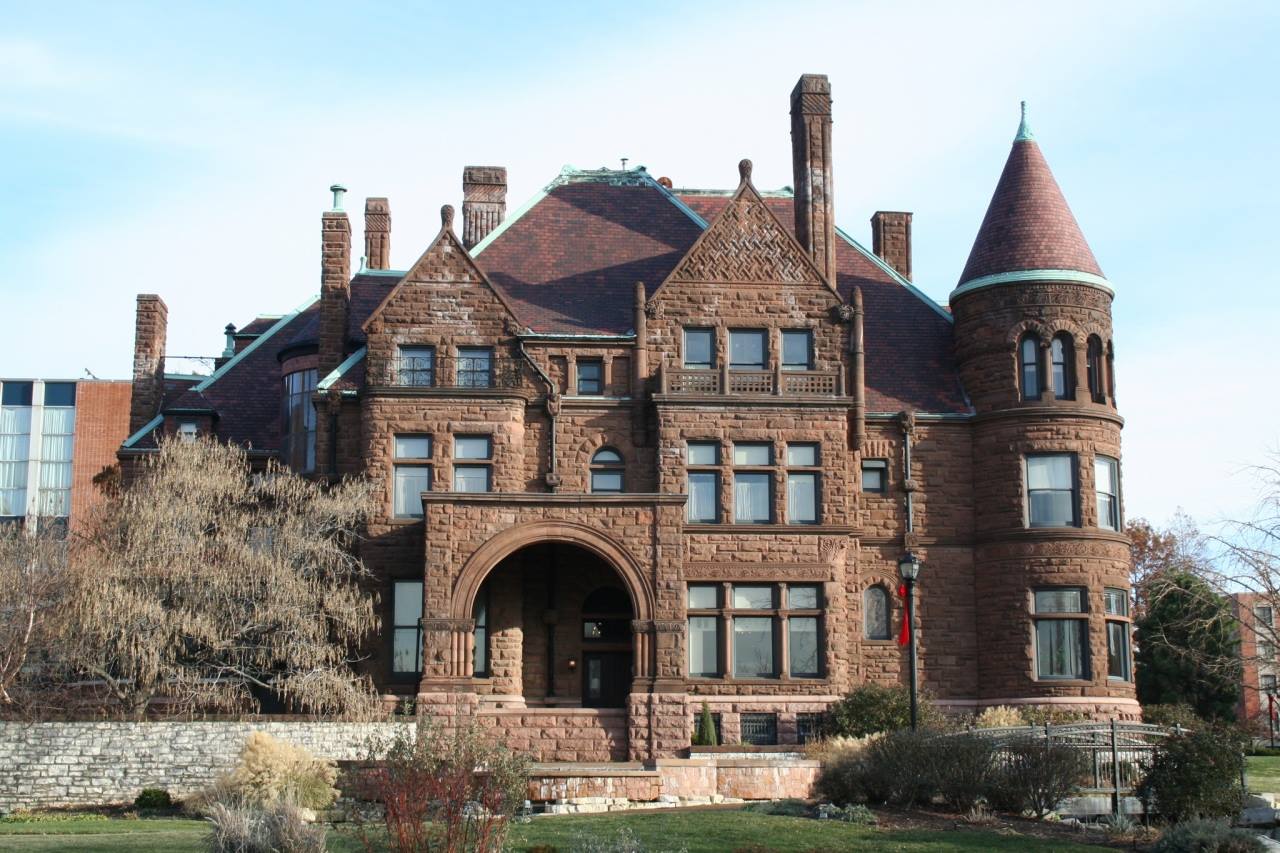#226. Majestic Romanesque Revival Mansion with Rich Stone Facade and Distinctive Corner Tower
This impressive mansion represents an exquisite example of Romanesque Revival architecture from the late 19th to early 20th century. The massive stone facade constructed from reddish-brown sandstone demonstrates the unparalleled craftsmanship of stonemasons from that era. The building features an asymmetrical composition, characteristic of the Romantic architectural movement, with an expressive corner tower crowned by a conical roof with copper cladding.
The facade abounds with architectural details: an arched main entrance with a massive portal, expressive stone cornices, decorative masonry, and skillfully executed window frames. Particularly noteworthy are the numerous chimneys executed in a style consistent with the main building, and the complex multi-pitched roof with distinctive dark red covering that complements the color palette of the facade.
When designing a modern facade design, one can borrow from this historical example the principle of textural contrast, the use of natural materials, and thoughtful asymmetrical composition. Even on a small private home, it would be appropriate to incorporate one expressive element (such as a bay window or turret), play with the texture of finishing materials, and pay careful attention to details — cornices, window casings, and entrance features.
